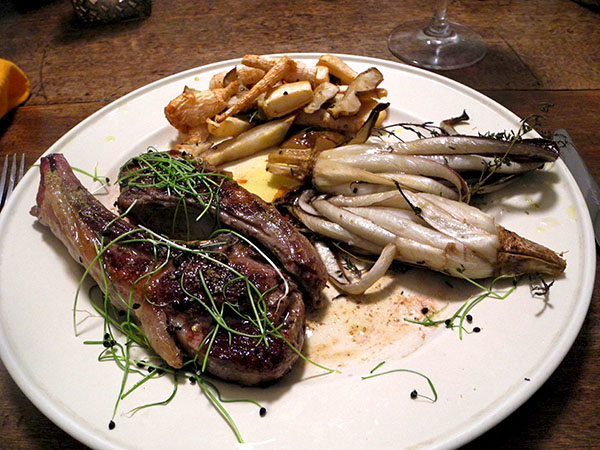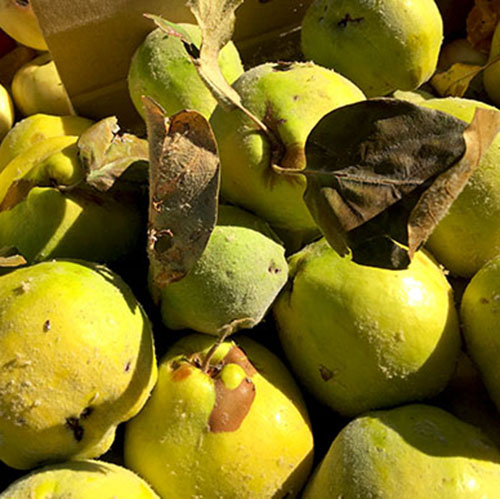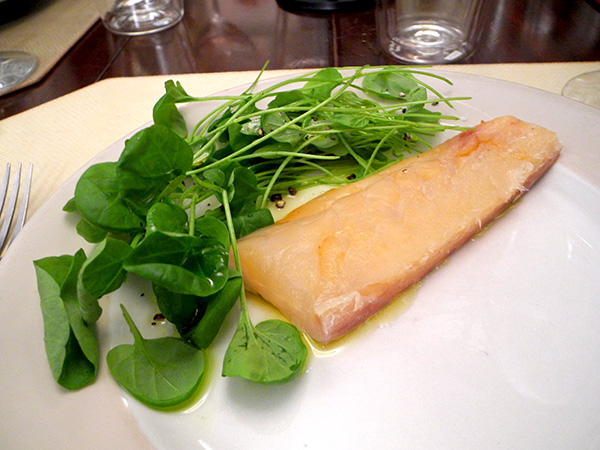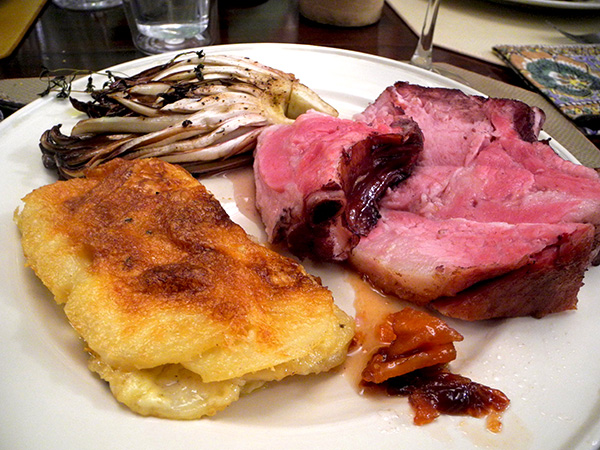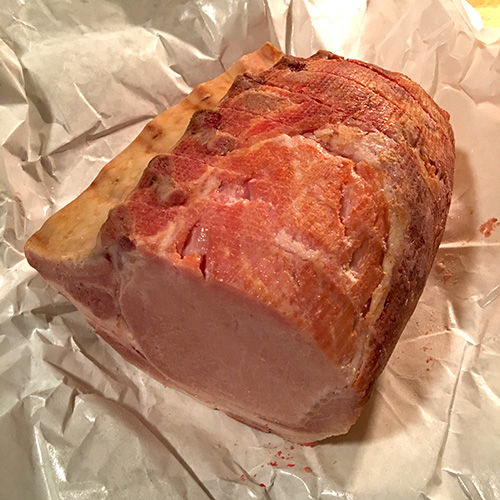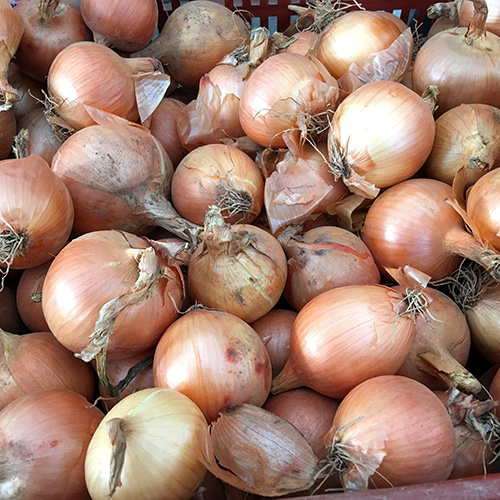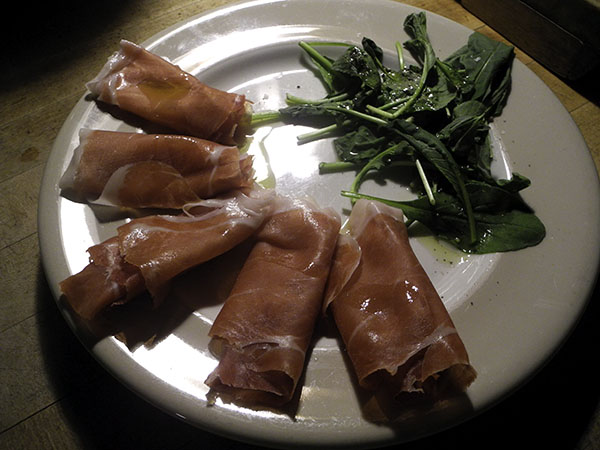
It is a fine fish, and this recipe is very fine; also, together, fish and recipe can offer some interesting variations, including many more than I have essayed, although I have to admit that this one has become almost a standard for me.
- one 15-ounce pollock fillet from Pura Vida Seafood, rinsed, dried, halved, and seasoned on both sides with sea salt and freshly-ground black pepper, placed skin side down inside a buttered an oval tin-lined copper gratin pan, spread with a mixture of softened unsalted Organic Valley ‘Cultured Pasture Butter’ mixed with zest from most of an organic Whole Foods Market lemon, slices of one tiny leek from Willow Wisp Farm, and part of a piece of crushed orange/gold home-dried Habanada pepper from Norwich Meadows Farm (harvested fresh in the early fall of 2016), the fish baked for about 15 minutes at 350º, removed to 2 plates, the cooking juices poured over the top, and a teaspoon or so of Sicilian salted capers, which had first been rinsed, drained, dried and heated briefly inside a small pan in a bit of olive oil, scattered over the fillets, with the oil, the pollock finished with a garnish of micro kohlrabi from Windfall Farms
- four small Rose Valley potatoes from Mountain Sweet Berry Farm, boiled with a generous amount of salt until barely cooked through, drained, halved, dried while still inside the medium-size still-warm vintage Corning Pyrex Flameware blue-glass pot in which they had cooked, tossed with a tablespoon or so of our rich ‘house butter‘, sprinkled with sea salt, freshly-ground black pepper, and a small amount of chopped lovage from Two Guys from Woodbridge, finished on the plates with sprinkled with ‘beet chips’ (thin slices, oven-dried) from Lani’s Farm
- one medium head of tardivo radicchio from Campo Rosso Farm, prepared pretty much according to this simple recipe, that is, washed under cold running water, the moisture shaken off, each head cut in half lengthwise, and a V-cut made most of the way through the root end to allow it to cook more rapidly, the halves arranged inside a small Pampered Chef unglazed ceramic oven pan cut side up, covered with thyme sprigs from Stokes Farm, seasoned generously with salt and pepper and drizzled with a tablespoon of olive oil, baked inside a 400º oven for about 12 minutes, turned over, baked for some 8 minutes more, turned a second time so the cut side is once again up, returned to the oven, this time for only a couple minutes or so, or until the stems were tender when pierced with a thin blunt metal pin (my all-purpose tester), removed from the oven, and in this case then kept somewhat warm until the pollock had been baked, since the temperature of the oven had to be reduced to 350º for its cooking [the tardivo can be served either hot or warm]
- the wine was a French (Loire) white, Pierre Riffault Le Bois Boutteux Sancerre 2016, the generous gift of some artist friends
- the music was the 1742 opera by Handel (and others), a pasticcio, ‘Catone’, Carlo Ipata conducting the ensemble, Auser Musici
